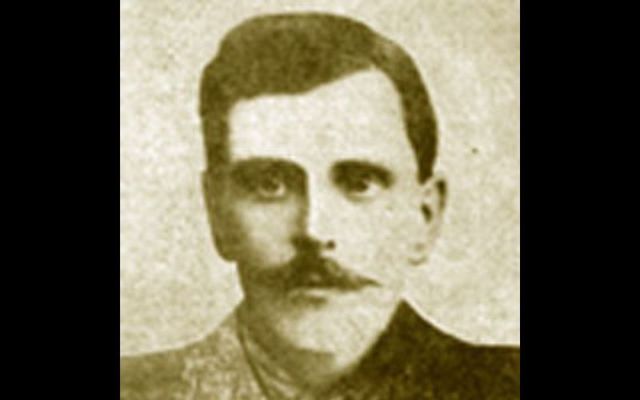They say the Irish love two things more than any other - A good love story. And a good funeral.
Well, the story of Michael Fitzgerald and his love, Miss Condon, has both. The story played out amid the violence and chaos of the struggle for Independence of the Irish nation on the streets of Cork City, a little over 100 years ago.
Michael’s Story
Michael Fitzgerald was an Irish Republican fighter, fighting the British Army and their occupation in Ireland during the War of Independence from January 1919 to July 1921.
Credited with bringing worldwide attention to the cause of Irish Republicanism, Michael (also known as Mick) was a Commandant in the local IRA. He was thought of in such high esteem by his comrades that when General Liam Lynch, who was Chief of Staff of the IRA, was shot dead by Free State in April 1923, General Lynch’s last wish was to be buried with his great friend and comrade, Michael Fitzgerald.
After being captured by the British Army in August 1920, Michael was immediately sentenced to prison. It was while in prison that Michael went on hunger strike to demand his and his comrades' release from captivity.
While suffering the final stages of malnutrition during his hunger strike in Cork Gaol (Jail), Michael was visited by the gaol doctor who informed him that he had only three days left to live.
Michael, at this stage, was surrounded by friends, family, priests, nuns, and most importantly, his fiancée – Miss Condon.
With but a few days left until his own body failed him due to hunger, Michael and his love talked of only one thing, their planned impending matrimony. It was Michael’s dying wish that he die a married man. He wished to be betrothed to the love of his life, Miss Condon.
In Steps The Gaoler
The tragic couple summoned the City Gaoler and requested their final wish before Michael died. The Gaoler, a politically astute man and political appointee of the British government in Ireland, knew that to deny this wish would be seen as heartless by the people of Cork and beyond.
So, after giving it some thought, he came up with his own Machiavellian solution to the issue. His response was: “You may get married to your love Micahel. However, from that day forward, no other Republican prisoners in the Gaol may have visitors."
This backhanded generosity was too much for the couple. They decided together to postpone their wedding till the afterlife, when they might meet in heaven amongst the angels.
Michael’s Funeral
Michael died of hunger, a single man, on October 17, 1920, in Cork Gaol. The people of Cork City didn’t forget about Michael. His funeral mass was held in St. Peter and Paul’s Church in the city center; the streets were lined with mourners to watch his funeral procession go past.
Buried in his hometown of Fermoy in Co Cork, Michael was given a full Republican military send-off including a tri-color flag draped over his coffin as well as a three-gun salute fired over this grave while the British Army, powerless to do anything because of the large crowds, looked on.
Not a whole lot is known about Miss Condon, save that she went through a suitable period of mourning and later went on to marry.
Cities with tragic love stories…
When the urban settings of well-known tragic love stories spring to mind, then surely Verona, of Romeo and Juliet fame, has to be top of most people’s lists. Maybe even the city of love and it’s immortal Notre Dame Cathedral which played host to the story of the "Phantom of the Opera."
For most casual observers, Ireland’s Rebel City of Cork comes way down the list. Cork’s love story maybe isn’t as famous as either of the above stories, however, what it does have going for it is it’s not a work of fiction but instead a real-life tragic story.
*Dara Burke is a local storyteller and True. Cork. Rebel. When he's not helping guests experience the real 'Rebel City' on his Rebel City Tour of Cork, featuring local food, local drink, and exciting Rebel tales, he's creating guides of things to do in Cork. Join him on his exciting Cork walking tour to immerse yourself in real Cork culture and make the most of your time in the city.
This article was submitted to the IrishCentral contributors network by a member of the global Irish community. To become an IrishCentral contributor click here.




Comments